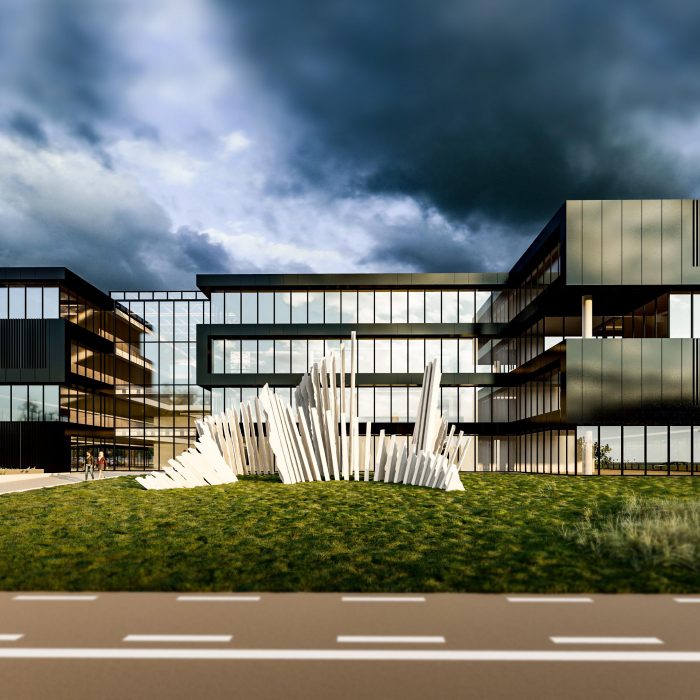Unsuccessful competition for the new headquarters of ING Bank in Louvain-la-Neuve.
The sculpture is positioned in the corner on the right-hand side of the entrance to the ING building. This position allows the building to form the backdrop to the sculpture, reinforcing the dialogue between the two.
The sculpture is made up of four groups of aligned slats. The slats are made up of a flat profile welded perpendicularly to a metal sheet, the outer edge of which is randomly cut to form a ‘T’. The orientation of the T shapes creates a foreground that is different from the background within the sculpture.
The sculpture gives off a play of spatialities that invites you to wander through it. The rocky appearance of the random cut-outs gives the impression of walking along a cliff. The sculpture becomes a place for relaxation and contemplation, offering more or less intimate spaces for meeting, chatting or isolating oneself.
The ING building provides views of the sculpture from different heights. The sculpture becomes a landscape that changes according to the time of day.
At night, the experience of the place is transformed. A series of lights integrated into the floor illuminate some of the slats to varying degrees, providing a sense of variation. The sculpture is transformed into a succession of luminous and shaded planes. The black panels of the building fade into the darkness as the sculpture lights up.
The banking sector works with figures in the form of graphs, bar charts, candlestick charts or linear charts. The concept of the sculpture is to materialise the shape of these graphs. The ‘numerary cliffs’, with their rocky appearance, are the result of the addition of these graphs.
